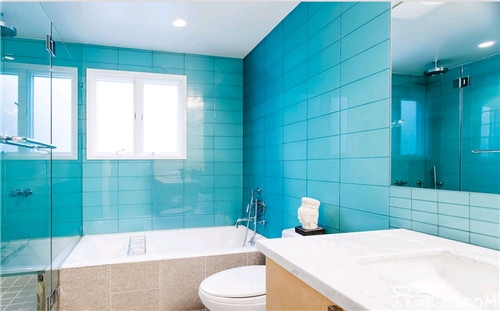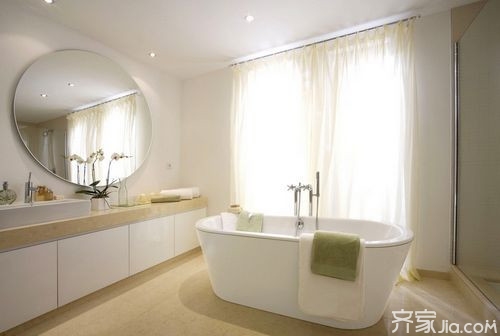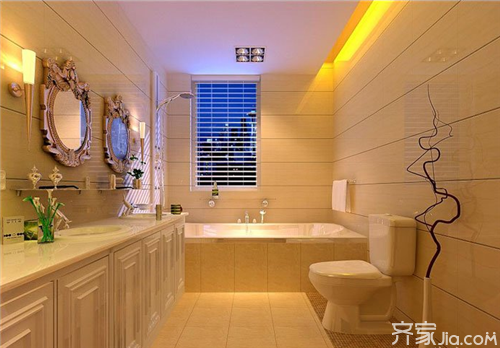Home decoration should be waterproof, prevent leakage work. The so-called anti-leakage, is to prevent leakage outside the home, if the hidden danger of leakage from the windows, balconies, windows and balconies due to the installation of aluminum doors and windows, waterproof, leakproof process can not meet standards or failure, resulting in every encounter Heavy rain has leakage phenomenon, if the decoration does not change, we must take remedial measures, for this decoration knowledge, most owners understand. However, how to do the installation of specific, in the various areas of the water treatment project should pay attention to what matters, the owners are very confused. How to do decoration waterproof and decoration waterproof notes, the following Xiaobian to illustrate the different areas of different waterproof practices. How to do decoration waterproof 1. Choose a waterproof material; 2. Do a good job of draining slopes; 3. Perform waterproof coating construction according to the construction method; 4. Prevent sticking to attention! (1) Choose a waterproof material that is simple to use, environmentally friendly, and waterproof. With polymer cement-based waterproof coatings, waterproof materials such as coils and polyurethane coatings cannot be used (difficult to achieve environmental protection and hard to achieve waterproof effect.) (2) Do a good job of draining slopes and reduce the chance of leakage. Drainage slopes are usually 2 to 5% of degree around the ground drain. (3) According to the construction instructions, the construction of the waterproof coating shall be used to make the waterproof coating reach the best waterproof effect. (4) A. The pre-embedded pipeline must be leakproof and waterproof. Tiles cannot be glued directly onto the buried pipe B. There are three places that need high attention in the waterproofing of the bathroom: the joints between the ground, walls, and walls, and the joints between the upper and lower water pipes and the ground. Ground: toilet floor waterproof first wipe. In order to avoid leakage of waterproof coating due to uneven thickness. Wall: In the general bathroom waterproofing treatment, a waterproof coating of about 30 cm in height is also required on the wall to prevent water from penetrating the wall. However, if the shower type, the wall surface to be 1.8 meters high; if it is a bathtub, the wall adjacent to the bathtub, the height of the waterproof coating is also higher than the upper edge of the bathtub 30 cm. Seams and corners: The seam between the bathroom wall ground and the joints between the upper and lower water pipes and the ground, the door threshold, is the most prone to problems. In construction, we must urge the workers to deal with these corners, all waterproof. 2. Before the renovation, we must carefully check whether the kitchen and bathroom in the upper floor are focused today: The humanized ceramic tile is listed as the end of the wooden floor. China's first sports ceramic brand is available? St. Alexander's furniture began to operate in the Chinese market. In 2007, the price of home improvement products was completely analyzed and leaked. If yes, it is necessary to make the waterproof works of the upper floors ready for renovation. If there is no accommodation for the time being or there is no other reason, the waterproof project on the upper floor can not be handled for a moment, then measures should be taken to remedy the problem: Apply polyurethane at the bottom of the leakage site, but the plaster layer of the leakage site should be disposed of. The grassroots should be dry. 3. When the kitchen and bathroom are renovated, if the original wall and floor tiles are knocked out and redecorated, no matter whether the original waterproof layer was used or not, the waterproof layer shall be re-made before the re-mounting of the wall and floor tiles. The waterproof layer around the side wall is 200mm high, and there is a bathtub. The parts and the waterproof layer should cover all parts where the shower can be sprayed. 4. Water repellent treatment when the kitchen and bathroom are not renovated: If the original waterproof layer is not used, add a waterproof layer according to the above method. If the waterproof layer was originally used, check it carefully to see if the waterproof layer is in place and damaged. Otherwise, repair. After the completion of the water injection test, no leakage and no humidity were accepted standards for the downstairs and surrounding walls. Decoration waterproof precautions 1, grassroots processing (1) Concrete walls with honeycomb and loose concrete should be removed, rinsed with water, then smoothed with 1:3 cement mortar or tamped with 1:2 cement mortar. The surface oil is scrubbed with a 10% aqueous solution of caustic soda and the surface of the concrete should be cut. (2) When wiping the waterproof layer on a brick wall, it must be slit when laying bricks, and the depth is 10-12mm. Through the wall embedded pipe exposed base, cut into a 20 ~ 30mm wide, 50 ~ 60mm deep groove, with 1:2 dry hard cement mortar tamping. Pipe through the wall should be designed to do a good job of waterproofing, and apply for hidden inspection procedures. 2, the concrete wall wipe cement mortar waterproof layer (1) Brush cement paste: mix ratio: cement: water: waterproof oil = 1:0.8:0.025 (weight ratio), mix the cement and water first, then add waterproof oil, mix well, and then use soft brush The base surface is painted evenly, and the underlying waterproof mortar is then wiped. (2) For the bottom mortar, use 1:2.5 cement mortar and add 3% to 5% of waterproof powder to the cement. The water-cement ratio is 0.6 to 0.65, and the consistency is 7 to 8cm. Mix the waterproof powder, cement, and sand first and then mix with water. After the mixing, the plastering operation is performed. The thickness of the bottom plaster is 5 to 10 mm, and the broom is used to sweep the hair before the ash is solidified. The mortar should be used with the mix. The time for mixing and using mortar should not exceed 60min, and overnight mortar is strictly prohibited. (3) Brush cement slurry: After the bottom ash is wiped, the cement slurry is brushed at room temperature for 1 day, and the mixing ratio and practice are the same as those for the first layer. (4) Plastering the mortar: After brushing the pulp, the surface layer is immediately followed by the mortar. The thickness of the plaster is approximately 5 to 10mm. Before the solidification, the wooden trowel must be used to flatten the surface. Press with an iron trowel. Light. (5) Brush cement slurry: After the surface layer is wiped, the cement slurry is brushed for 1d. The mixing ratio is cement:water:waterproof oil = 1:1:0.03 (weight ratio). The method is the same as the first layer. 3, plastering procedures, follow-up and yin and yang practice Plastering procedures, generally wipe the wall after wiping the ground. Scorpions should not be thrown at the yin and yang corners. Each layer of plastering spatula should not be left on a line. The bottom layer and the surface layer of the pagoda should be between 15 and 20 cm. All the wall's inside corners have to be radiused with a radius of 50mm, and the corners are rounded with a radius of 10mm. The overcast angle on the ground must be rounded to more than 50mm, and then lighted and compacted with a female angle trowel. The total thickness of the fifth floor is controlled around 20mm. Multi-layer practices should be continuous construction, all layers closely combined, leaving no or a lot of construction joints, such as must be left when leaving a ladder, then follow the order to operate in accordance with the hierarchy, the layers overlap tightly, the joints are required to leave the position The inside corner is 200mm. 5. After the wet and moist parts of the kitchen, bathroom and other parts are completed, the elevation of the ground should be lower than the elevation of the hall or the corridor ground. The kitchen and bathroom doors should be installed with stones that are not afraid of water. Waterproof treatment should be done at the roots to prevent seepage of water from the door opening to the living room. 6. The toilet and kitchen walkway gaps require special attention. Before the installation of the threshold, it is necessary to use cement to stir and fill the door and door after drying, so that the daily cleaning of the toilet and kitchen can effectively block and separate the flowing water, effectively achieving the waterproof and leakproof function. , You can go to Spori company to see, their waterproof material is not bad, these are where they study. Editor's summary: The above is related information on how to do decoration decoration and waterproof precautions. It is for reference only and hopefully helps everyone. If you want to know more related information, you can pay attention to this website information. Decoration waterproof
CuW alloys are used where the combination of high heat resistance, high electrical and thermal conductivity, and low thermal expansion are needed. Some of the applications are in electric resistance welding, as electrical contacts, and as heat sinks. As contact material the alloy is resistant to erosion by electric arc. WCu alloys are also used in electrodes for electrical discharge machining and electrochemical machining.
Copper–tungsten (tungsten–copper, CuW, or WCu) alloy is a pseudo-alloy of copper and tungsten. As copper and tungsten are not mutually soluble, the material is composed of distinct particles of one metal dispersed in a matrix of the other one. The microstructure is therefore rather a metal matrix composite instead of a true alloy.
Tungsten Copper Rod,Copper Tungsten Alloy Rod,Tungsten Of Copper Alloy,Cuw Rod Tungsten Of Copper Alloy Shenyang New Industry Co.,LTD , https://www.topcobalt.com

